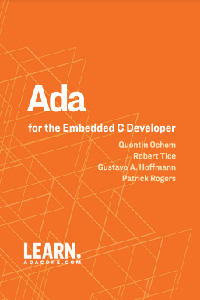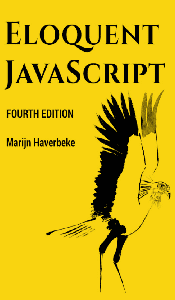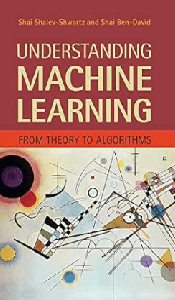Ada for the Embedded C Developer is a comprehensive guide that introduces the Ada programming language to embedded developers. It highlights the benefits of Ada, such as strong static typing for enhanced safety and protection against runtime errors. The book explores real-time and multi-threading features, making Ada suitable for autonomous systems, medical devices, and avionics. It covers topics like concurrent program verification, low-level performance optimization, fixed-point arithmetic, modular and object-oriented programming, code porting, and reuse. The text also emphasizes Ada’s long lifecycle management and certification advantages for developing ultra-high dependable systems.
Recommended for:
- Intermediate to advanced programmers, particularly those with experience in C programming and embedded systems development
- Developers who are interested in exploring an alternative to C for their embedded software projects
- Engineers and programmers working on safety-critical or high-integrity systems who want to leverage Ada’s strong type system and formal verification capabilities
You will:
- Gain a solid understanding of the Ada programming language and how it compares to C from the perspective of an embedded software developer
- Learn the key features of the Ada language including its strong typing, support for concurrency and real-time programming, and low-level hardware interfacing
- Explore how to effectively use the GNAT toolchain for building and debugging Ada applications for embedded targets
- Discover techniques for translating existing C code to idiomatic Ada, while taking advantage of Ada’s language features
- Understand best practices for writing safe, secure, and verifiable Ada/SPARK code for mission-critical embedded systems
- Learn how to interface Ada with C and leverage low-level hardware access in embedded environments
- Dive into Ada’s support for interrupt handling, fixed-point arithmetic, volatile/atomic data, and other embedded programming concerns
- Explore how to enhance verification and correctness of your embedded software using the SPARK formal methods subset of Ada
Detailed Overview
This book provides a practical and comprehensive introduction to Ada, a powerful programming language specifically designed for safety-critical systems. It is tailored for embedded developers who are experienced in C and offers clear comparisons between Ada and C in terms of syntax, program structure, and problem modeling techniques.
The book highlights the significant advantages of Ada over C, particularly its strong static typing which eliminates many common runtime errors like buffer overflows. It explores Ada’s safety features and demonstrates how the language provides robust protection against exploitation.
Practical chapters delve into Ada’s real-time and multi-threading capabilities, showcasing its suitability for developing autonomous systems, medical devices, and avionics. Code examples illustrate the verification of concurrent programs using the SPARK proof subset and static analysis tools, ensuring high reliability.
To support the development process, the book extensively covers the GNAT toolchain, which is a widely used Ada development environment. The GNAT toolchain includes the GNAT compiler, GNAT Programming Studio (GPS) integrated development environment, and various analysis and verification tools. It provides developers with a comprehensive set of tools for writing, compiling, debugging, and analyzing Ada programs.
Additionally, the book explores techniques for direct hardware access through alignment specifications and embedded assembler, addressing low-level performance concerns. It covers fixed-point arithmetic, ensuring precise calculations in resource-constrained applications.
Modular and object-oriented programming concepts are discussed in detail, equipping developers with the knowledge to design scalable and maintainable software.
Furthermore, the book provides guidance on code porting, reuse, and configurability using generics and contracts, streamlining the development process. Interviews with adopters from critical domains reinforce the benefits of Ada and the GNAT toolchain.
For those considering a transition from C, the book highlights Ada’s long lifecycle management and certification advantages. It emphasizes the importance of future-proofing safety-critical products in a world with increasing litigation and regulatory demands.
Citation
Ochem, Q., Tice, R., Hoffmann, G.A., Rogers, P. (2022). Ada for the Embedded C Developer. Adacore. Retrieved from https://learn.adacore.com/courses/Ada_For_The_Embedded_C_Developer/index.html.
Licensing
This work is licensed under a Creative Commons Attribution 4.0 International (CC BY 4.0) license. The full text of the license is available at https://creativecommons.org/licenses/by/4.0/.







